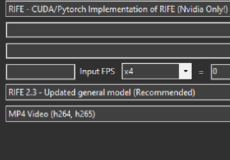

LoveMoney
Advertisement
LoveMoney takes place in a restricted setting where the player’s purpose is straightforward — to earn enough money to cover the cost of an urgent surgery. The story begins without extended exposition, immediately focusing on the process of accumulation and decision-making. Early in the game, the player encounters Harvey Harvington, who introduces various options for increasing income, some legitimate and others questionable. The space functions less as a location and more as a symbolic environment where every interaction contributes to the theme of choice, pressure, and moral calculation.
Advertisement
Similiar games
LoveMoney takes place in a restricted setting where the player’s purpose is straightforward — to earn enough money to cover the cost of an urgent surgery. The story begins without extended exposition, immediately focusing on the process of accumulation and decision-making. Early in the game, the player encounters Harvey Harvington, who introduces various options for increasing income, some legitimate and others questionable. The space functions less as a location and more as a symbolic environment where every interaction contributes to the theme of choice, pressure, and moral calculation.
Core Gameplay and System Design
The gameplay in LoveMoney is constructed around a continuous cycle of earning, upgrading, and deciding. The player begins with simple clicking actions that generate small profits and gradually unlocks opportunities to expand income sources. The system uses repetition as a structural tool, connecting mechanical routine with emotional tension.
The cycle follows a predictable rhythm:
· Generate money through direct action.
· Invest earnings in available upgrades or shortcuts.
· Engage in dialogues that shift moral direction.
· Observe consequences that affect relationships and outcomes.
This loop encourages balancing speed with awareness, forcing the player to consider the effect of every improvement or shortcut.
Decision-Making and Narrative Pathways
LoveMoney uses dialogue and interaction to shape its branching structure. Each choice in conversation or transaction leads to adjustments in both narrative tone and economic potential. The story records every decision, combining numerical progress with moral consequence. Faster income may cost trust or stability, while slower methods can preserve integrity but threaten survival. The branching narrative ensures that no two playthroughs are identical, and each ending reflects how the player prioritized efficiency, emotion, or principle.
Visual Layout and Technical Execution
The interface of LoveMoney emphasizes clarity and rhythm over visual variety. The player operates within a single main screen displaying money counters, upgrade options, and dialogue boxes. The minimalist layout mirrors the repetitive nature of the gameplay. Color changes and short sound cues signal progress or tension, maintaining a consistent feedback cycle. The absence of distractions keeps attention on the relationship between effort and outcome, allowing the player to focus on process rather than presentation.
Discuss LoveMoney




















